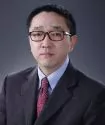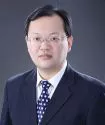A. TYPES OF IP RIGHTS
1. What different types of intellectual property rights exist in your jurisdiction to protect:
(a) Inventions (e.g. patents, supplementary protection certificates, rights in trade secrets, confidential information and/or know-how);
The following are available for inventions: patents, rights in trade secrets, confidential information and/or know-how
(b) Brands (e.g. trade marks, cause of action in passing off, rights to prevent unfair competition, association marks, certification marks, hallmarks, designations of origin, geographical indications, traditional speciality guarantees);
The following are available for Brand: trade marks, rights to prevent unfair competition, association marks, certification marks, hallmarks, designations of origin, geographical indications
(c) Other creations, technology and proprietary interests (e.g. copyright, design rights, semiconductor topography rights, plant varieties, database rights, rights in trade secrets, confidential information and/or know-how).
The following are available for other creations, technology and proprietary interests: copyright, design rights, semiconductor topography rights, plant varieties, database rights, rights in trade secrets, confidential information and/or know-how
2. What is the duration of each of these intellectual property rights? What procedures exist to extend the life of registered rights in appropriate circumstances?
Invention patent: 20 years from filing date; Utility model/design: 10 years from filing date; Semiconductor topography:10 years from filing date or 15 years from the creation date, whichever is earlier; Plant varieties:15-20 years depending on the specific variety.
There is no procedure to extend the above IP's life of right.
Trademarks: 10 years since registration date. Renewable for 10 years each time (1) within 6 months before the expiration, or (2) within a grace period of 6 months beyond the expiration.
Copyright: For a work of a citizen, the lifetime of the author and 50 years after his death, For a work belongs to a legal entity, 50 years after the first publication of such work. No renewal or extension.
3. Who is the first owner of each of these intellectual property rights and is this different for rights created in the course of employment or under a commission?
Patents, semiconductor topography and plant varieties: the entities or individuals who made the invention-creation, unless otherwise agreed upon in advance. For service invention-creation, the first owner is the employer unless otherwise agreed upon in advance.
Trademarks: trademark applicant.
Copyright: citizen who has created the work, legal entity or another organization that supervises the completion of the work.
B. REGISTRATION
4. Which of the intellectual property rights described in section A are registered rights?
Patents, trademark, semiconductor topography rights and plant varieties are registered rights.
Copyright registration is optional.
5. Who can apply for registration of these intellectual property rights and, briefly, what is the procedure for registration?
Patent, trademark, semiconductor topography and plant varieties: Any individual, legal entity or other organisation.
The registrations of patent in China can follow either Paris conventional route or PCT route (not for design). But for semiconductor topography and plant varieties, there is only one route: directly filing the application with the competent authority in China.
The registrations of trademark in China can follow either domestic filing route or international filing route.
Copyright: Copyright owner or its successor. Direct filing route.
6. How long does the registration procedure usually take?
Patents, semiconductor topography and plant varieties: For invention patent, it takes on average 2.5 years from filing to granting. For utility model patent, it takes on average 10 months from filing to granting. For design patent, it takes on average 6 months from filing to granting. For semiconductor topography, it takes on average 2 months from filing to registration. For plant varieties, it takes on average 4 years from filing to registration.
Trademarks: 1 year on average.
Copyright: 3 months on average.
7. Do third parties have the right to take part in or comment on the registration process?
Patents: only for invention patent after publication. For utility model/design, semiconductor topography and plant varieties, the third party has only option of file an invalidation request after the announcement of the rights.
Trademarks: within three months since the publication.
8. What (if any) steps can the applicant take if registration is refused?
The applicant could appeal with the competent authorities if registration is refused.
9. What are the current application and renewal fees for each of these intellectual property rights?
Official fee RMB 950 for invention; RMB 500 for utility mode/design; RMB 1000 for semiconductor topography; 0 RMB for plant variety; RMB 300 for regular trademark; RMB 1500 for certification/collective mark; RMB 300 for copyright.
10. What are the consequences of a failure to pay any renewal fees and what (if any) steps can be taken to remedy a failure to pay renewal fees?
Patents or trademark: abandonment of the right with possible restoration.
Copyright, semiconductor topography and plant varieties: No renewal fees.
C. ASSIGNMENT
11. What are the requirements to assign ownership of each of the intellectual property rights described in section A?
Patents, semiconductor topography, plant varieties, copyright and Trademarks: file a request for the assignment.
12. Is there a requirement to register an assignment of any of these intellectual property rights and, if so, what is the consequence of failing to register?
Yes. Failing to register results in invalid assignment.
D. LICENSING
13. What are the requirements to licence a third party to use each of the intellectual property rights described in section A?
A licence contract.
14. Is there a requirement to register a licence of any of these intellectual property rights and, if so, what is the consequence of failing to register?
Yes, but it is advisable not mandatory, and not influence the effectiveness of a license contract.
15. Are exclusive and non-exclusive licensees given different rights in respect of the enforcement of the licensed IP, and if so, how do those rights differ?
Yes. The licensee's rights as to lodging lawsuits are different.
E. ENFORCEMENT
16. Are there criminal sanctions for infringement of any intellectual property rights, and if so, what are they and how are they invoked?
Criminal sanctions are available in China for severe infringing activities of IP rights, including copyright, trademarks, patents and trade secrets.
Patents:
In the fields of patent, criminal sanctions only apply to the act of counterfeiting patents, whoever counterfeits the patent of another shall, if the circumstances are serious, be sentenced to fixed-term imprisonment of not more than three years or criminal detention and shall also, or shall only, be fined.
Trademarks:
Any person who takes below actions shall bear criminal liabilities: (1) Use a trademark that is identical with other's registered trademark on identical goods without consent of the registrant and constitutes a crime; (2) Counterfeits, or marks without authorization, representations of a registered trademark of another person, or offers for sale such representations and constitutes a crime; (3) Knowingly sells goods that bear a counterfeited registered trademark and constitutes a crime. The infringement act can be reported before public security organs to invoke criminal sanctions.
Copyright:
Whoever, for the purpose of reaping profits, has committed one of the following acts of copyright infringement and gains a fairly large amount of illicit income, or when there are other serious circumstances, is to be sentenced to not more than three years of fixed-term imprisonment, criminal detention, and may in addition or exclusively be sentenced to a fine; when the amount of the illicit income is huge or when there are other particularly serious circumstances, he is to be sentenced to not less than three years and not more than seven years of fixed-term imprisonment and a fine:
(1) copy and distribute written, musical, movie, televised, and video works; computer software; and other works without the permission of their copyrighters;
(2) publish books whose copyrights are exclusively owned by others;
(3) duplicate and distribute audio-visual works without the permission of their producers;
(4) produce and sell artistic works bearing fake signatures of others.
17. What other enforcement options are available in your jurisdiction for each of the intellectual property rights described in section A? For example, civil court proceedings, intellectual property office proceedings, administrative proceedings, alternative dispute resolution.
Civil court proceedings, administrative proceedings, customs seizure actions, meditation, tort complaint
18. What is the length and cost of such procedures?
The length and cost of such procedures depend on the complexity of the case and the workload of the official department. For instance, the first instance judgement before the court is on average 6 months.
19. Where court action is available, please provide details of which court(s) have jurisdiction, how to start proceedings, the basics of the procedure, the time to trial, the format of the trial, the time to judgment and award of relief and whether any appeal is available.
Jurisdiction: where the defendant is domiciled or where the infringing act or results take place.
Commencing Proceedings: Plaintiffs must file (1) a Power of Attorney, (2) a copy of Certificate of Incorporation and (3) a Certificate of Identity of the Legal Representative (if the Plaintiff is a legal entity rather than an individual)
After the case is accepted by the court, the court shall send a copy of the plaintiff's complaint to the defendant within five days, and the defendant shall file a defence, if any, within 15 days from receipt of the copy of the plaintiff's complaint. When the defendant files a defence, the people's court shall send a copy of it to the plaintiff within five days from its receipt.
Trial Format: Simple IP trials usually last several hours, while complex ones could be longer. And the trial mainly consists of three parts:1) Court investigation; 2) Court debate;3) Final statement.
Judgements, Relief and Appeal: Civil cases concerning only domestic parties shall be concluded within six months of the date the case was accepted. While civil cases involving foreign parties have no fixed timeline.
If infringement is found, judges in civil cases can award monetary damages or injunctive relief for rights holders.
If a party refuses to accept a judgment of first instance of a people's court, he shall have the right to file an appeal with the people's court at a higher level within 15 days from the date of the service of the judgement.
20. What customs procedures are available to stop the import and/or export of infringing goods?
Customs Protection or Border Protection in China to stop the import and/or export of infringing goods.
Patent, Trademark and/or Copyright record can be put before China Customs for supervising the import and export goods.
21. Are any non-court enforcement options or dispute resolution mechanisms mandatory in respect of intellectual property disputes in any circumstances? If so, please provide details.
At present, we are still exploring a diversified mediation mechanism for intellectual property disputes.
22. What options are available to settle intellectual property disputes in your jurisdiction?
Besides the options stated in above questions, disputes can be settled through mediation. Once a mediation agreement is reached, the people's court will draw up a written mediation paper, which clearly set forth the claims of the action, the facts about the case, and the result of the mediation. Once the mediation paper is signed by both parties, it becomes legally binding and enforceable.
F. ESTABLISHING INFRINGEMENT OR LIABILITY
23. What is required to establish infringement of each of the intellectual property rights described in section A? What evidence is necessary in this context?
For patents, evidence to establish infringement including followings:
Firstly, evidence that the plaintiff has the standing to sue against the alleged patent infringer;
Secondly, evidence that the technical solution alleged for infringement comprises technical features identical or equivalent to all the technical features recited in the claim;
Thirdly, evidence that the patent in issue has been exploited by the alleged infringer without permission of the patentee.
For trademark, the infringement may be established under below condition:
The use of the questionable mark which is identical with or similar to the mark with prior rights is confirmed to be the use of trademark and its use on same or similar goods is likely to cause confusion.
24. How does the court acquire any necessary information (fact or technical) and in what circumstances does it do so? In particular -
(a) Is there a technical judge, a judge with technical experience, a court appointed expert, an expert agreed by the parties, and/or parties' expert witness evidence?
Yes, all the mentioned are available. It is worth pointing out that Chinese courts have been exploring the mechanism of finding out technical facts by multiple means in technical cases. At present, with the establishment of "national court technical investigation talent pool", there are more than 360 technical investigators and technical consulting experts, who are shared in the national court system.
(b) What mechanisms are available for compelling the obtaining and protecting of evidence? Is disclosure or discovery available?
Yes. At present, important evidence can be collected by means of evidence preservation, order for filing documents, lawyer investigation order and so on. However, the conditions for the issuance of the lawyer's investigation order, the elements of evidence preservation and the standardized process, the starting procedure and the scope of application of the system of obstruction of proof are still explored in the case.
25. How is information and evidence submitted to the court scrutinised? For example, is cross-examination available and if so, how frequently is it employed in practice?
According to the principle of "the burden of proof rests with the claimant", the parties should actively adduce the evidence and accept the inquiry to the other party. The number of questions is determined according to the complexity of the case and the specific needs of the trial. On this issue, the current principles of judicial practice are: 1) the evidence must be disclosed, and the right of cross-examination must be guaranteed; 2) the necessary filtering mechanism of confidential information must be determined in the cross-examination procedure.
26. What defences to infringement are available?
For patent, defences include: Invalidation defence; Disclosure-dedication rule; doctrine of history estoppel; prior art defence; exhaustion of patent right; exceptions of infringement.
For trademark, defences include: no trademark infringement; legitimate use;legitimate product source; prior rights or use laches and/or loss of statutory limitations; unclean hands; lack of standing to sue or to be sued; no trademark in commercial use inside China.
For copyright, defences include: lndependent creation; licensed use; fair use; laches and/or loss of statutory limitations; public domain; abuse of rights; lack of standing to sue or to be sued.
G. CHALLENGES TO INTELLECTUAL PROPERTY
27. Who can challenge each of the intellectual property rights described in section A?
Anyone.
28. When may a challenge to these intellectual property rights be made (e.g. during any registration process or at any time during the subsistence of the right)?
Generally after the granting or registration of the IP right. For patent , during the prosecution one could challenge by filing a third party observation; For trademarks: opposition can be filed within 3 months since the publication; or cancellation after 3 years since the approval of registration based on non-use; anytime after the date of registration based on claim of generic name. Invalidation can be filed within 5 years since the date of registration.
29. Briefly, what is the forum and the procedure for challenging each of these intellectual property rights and what are the grounds for a finding of invalidity of each of these intellectual property rights?
For patents: Invalidation requests relating to patents must be filed to the China National Intellectual Property Administration (CNIPA), together with invalidation evidence materials. After accepting the case, CNIPA will deliver the invalidation request and evidence to the patent owner, who will need to file a written response to CNIPA within statutory time limit, and CNIPA will hold an oral hearing with both parties and make a written decision afterwards regarding the validity of the patent in issue.
The grounds for invalidation are as follows: being unpatentable subject matter, lacking novelty and/or inventiveness over the prior art, lack of practicability, insufficient disclosure, lack of clarity, lack of essential technical features, double patenting, amendments extending the scope of original disclosure, non-compliance with requirements of confidentiality examination, and/or divisional application exceeding the disclosure of original application.
For trademarks: The forum for challenging trademark rights include: oppositions, invalidations, cancellations, and administrative proceedings, civil proceedings, criminal proceedings. See 26 for the grounds thereof.
30. Are there any other methods to remove or limit the effect of any of the intellectual property rights described in section A, for example, declaratory relief or licences of right?
Patents:
(1) Declaratory relief: Where a patent holder sends a warning to others for infringing a patent and where the patent holder neither withdraws the warning nor files a lawsuit within one month upon receiving a written reminder in which the person warned or the interested party urges the patent holder to exercise the right of action, or within two months upon issuing the written reminder, the courts shall accept the case if the person warned or the interested party files a request for a declaratory judgment action for non-infringement.
(2) Compulsory licensing: under any of the following circumstances, the patent administration department, upon the request of an entity or individual which is qualified to exploit the invention or utility model, grant a compulsory license: 1) where the patentee, after three years from the date of grant and four years from the date of filing, does not exploit or sufficiently exploit the patent without any justified reasons; 2) where the exercising of the patent right by the patentee is legally determined as monopoly.
Trademarks:
Cancellation can be filed based on non-use in three consecutive years or claim of generic name to removal the effect. Establish exclusive license to exclude the registrant of trademark to use the licensed trademark to limit the effect. Recordal of change/termination of recorded licence to removal or limit the effect of the license.
Copyright: (1) Independent creation; (2) contractual limitations or exclusive license; (3) fair use.
H. REMEDIES
31. What remedies (both interim and final) are available for infringement of each of the intellectual property rights described in section A?
Remedies of court proceeding include temporary injunction before or during a trial, court judgement ordering the infringer to stop infringement and monetary compensation.
In administrative proceedings, the owner cannot get damage compensation unless the infringer volunteers to pay compensation.
In judicial proceedings, the amount of damages shall be accessed on the basis of the actual losses suffered by the right holder because of the infringement. Where it is difficult to determine the actual losses, the amount may be increased on the basis of the profits the infringer has earned because of the infringement. Where it is difficult to determine the losses the right holder has suffered or the profits the infringer has earned, the amount may be assessed by reference to the appropriate multiple of the amount of using the IP under a contractual license. Where the infringement is committed in bad faith and the circumstance is serious, the amount of damage shall be more than 1 time but less than 5 times of the amount assessed by referring to the above calculation. The amount of the damage shall also include the reasonable expenses of the right holder incurred for stopping the infringement act. Where it is difficult to determine the losses suffered by the right holder, the profits the infringer has earned and the fees of licensing, the people's court shall grant a compensation not exceeding RMB 5,000,000 yuan.
32. What are the costs of enforcement proceedings and is any kind of costs recovery available for successful parties? Is there a procedural mechanism enabling or requiring security for costs?
Patents:
Costs of enforcement usually includes litigation fee, attorney's fee, notarization fee, investigation fee, infringing product purchasing and other expenses.
The cost awarded to the successful party is at the court's discretion in its judgement and the winning party could apply for compulsory execution of the judgement.
Trademarks:
Costs for litigation proceedings: In administrative cases of intellectual property, the official cost is RMB100. In civil cases, if there is no disputed amount or price, RMB 500 to RMB1,000 shall be paid for each case; if there is any disputed amount or price, it shall be paid according to the standards of property cases.
In administrative cases, the official fee for litigation proceedings of the successful party will be burdened by the other party. In civil cases, the official fee for litigation proceedings and damage caused by infringement and reasonable expenses of the right holder incurred for stopping the infringement act shall be burdened by the infringer.
Where one party requests for preservation of measures or evidences, security of costs may be requested when necessary.
I. COVID-19
33. Has the COVID-19 pandemic caused any changes (temporary or permanent) to the protection or enforcement of intellectual property? For example, changes to deadlines, filing or evidence requirements or court processes.
In the aspect of prosecution, the pandemic has accelerated the reform of paperless application process of China Trademark Office. More types of applications can be submitted electronically via the Internet to facilitate the applicants.
In the aspect of litigation, during the outbreak, courts at all levels in China extensively conducted online cloud trials. However, it is unsuitable for complex cases to carry on cross-examination and the trial efficiency is relatively low. It can be predicted that a large number of backlog cases have been generated in the courts due to the epidemic situation, including foreign-related cases, which have to apply for extension because the notarization and certification procedures cannot be submitted within the prescribed time limit. After the outbreak, it is believed that there will be an explosive growth in litigation cases.
Originally published 03 August, 2020
The content of this article is intended to provide a general guide to the subject matter. Specialist advice should be sought about your specific circumstances.



